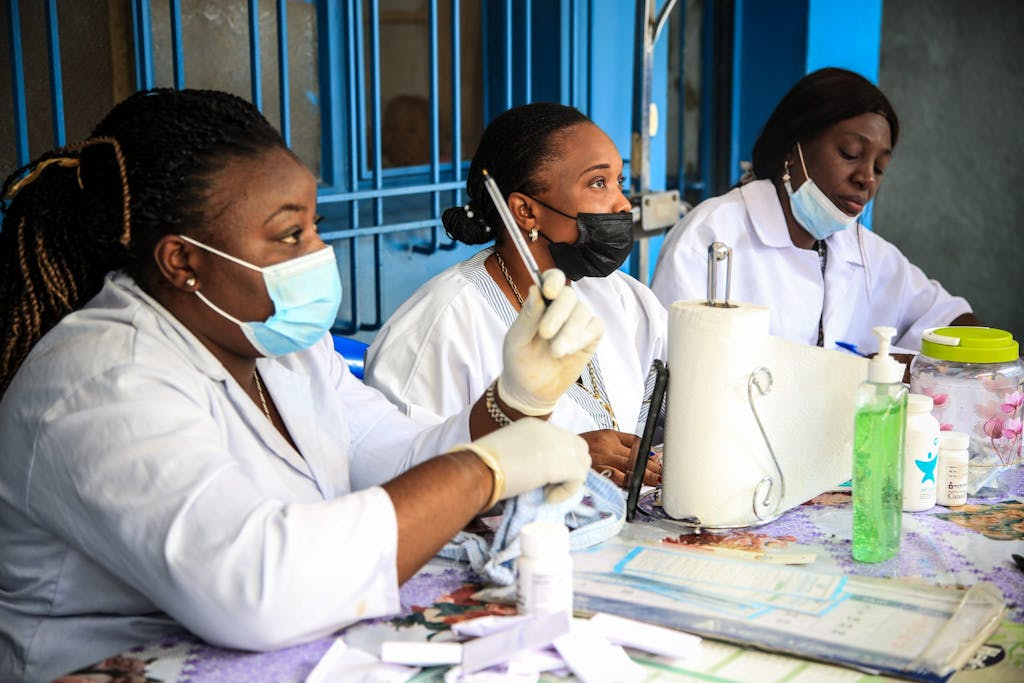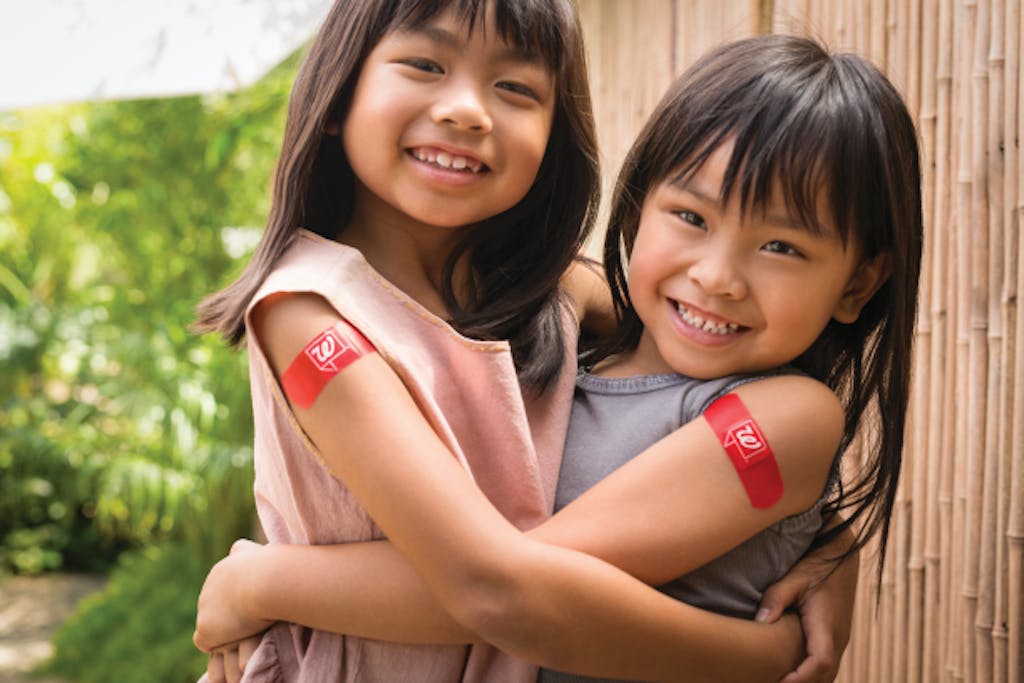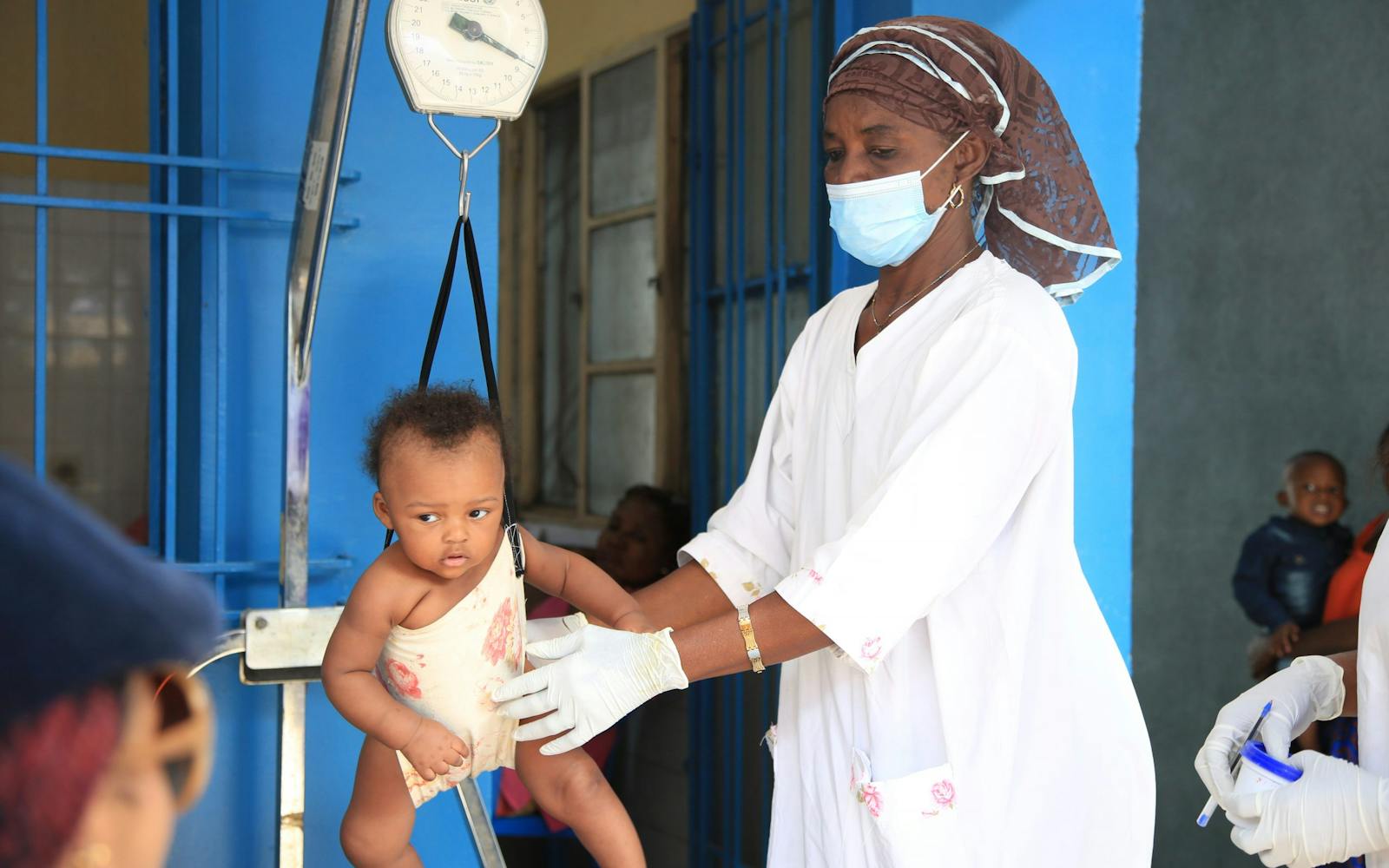Millions of children around the world are now more susceptible to diseases such as measles, polio, and pneumonia — all of which are preventable with vaccines. But the COVID-19 pandemic, vaccine misinformation, supply chain disruptions, and more children displaced from countries in conflict have put a strain on health systems that has interfered with childhood immunization. While the news is alarming, there are reasons to stay hopeful. To understand the solutions, we must first understand the extent of the problem.
Backsliding in Childhood Immunization Rates
The World Health Organization (WHO) and United Nations Children’s Fund (UNICEF) jointly released the latest estimates of immunization coverage rates around the world for 2021, which found that 25 million children missed basic vaccines — the largest continued backslide in vaccinations in three decades.
Of particular concern is that in 2021, 18 million children received no vaccinations ever. The number of these “zero-dose children” has not been this high since 2008. Zero-dose children account for nearly half of all vaccine-preventable deaths, and most of these children live in low- and middle-income countries.
Unsurprisingly, the number of outbreaks is already on the rise around the globe. Measles outbreaks have, in the first nine months of this year, infected more than 65,000 people and caused 367 deaths in Afghanistan alone, according to WHO. That is more than double the 156 measles deaths the country reported in all of 2021. In addition, polio has been detected in places where it has not been seen in decades, including the U.S. and the UK.
UNICEF Executive Director Catherine Russell called the findings a “red alert for child health,” adding in a press release, “We are witnessing the largest sustained drop in childhood immunization in a generation. The consequences will be measured in lives.”
Children Are More Susceptible
Ms. Russell’s prediction has already happened. More than 700 children have died in a measles outbreak in Zimbabwe. Children living in fragile settings are also more likely to suffer from food insecurity. Near-famine conditions in Eastern Africa have led to increased malnutrition rates in children, weakening their immune systems and making them more vulnerable to vaccine-preventable diseases.
“The convergence of a hunger crisis with a growing immunization gap threatens to create the conditions for a child survival crisis,” the WHO and UNICEF warned in a press release issued with the release of the data. They have sounded a chilling alarm that we cannot ignore.
Reasons for Hope
As philanthropist Bill Gates recently said, “Overall, it is a very challenging situation but we’re asking people, ‘Just because it’s tough, don’t turn away.’ It’s literally about millions of lives and the very stability of these African governments that, when things go well, they are able to lift their country out of poverty and become self-sufficient. Aid has overall been very, very effective.”
Immunizing millions of children is a daunting task, but I am confident that it is possible. There are many reasons that I remain hopeful.
1) There is a plan in place to address the problem.
Undoubtedly, this moment calls for urgent action, and that requires a plan. Thankfully, there is a plan in place to provide vaccines to those in need: global Immunization Agenda 2030. Under IA2030, UNICEF and WHO are working with Gavi, the Vaccine Alliance and other partners to prevent diseases and deaths by providing vaccines to every child in every community, as well as ensuring adults receive the vaccines needed throughout their lives. IA2030 aims to leave no one behind and to save 50 million lives.
We know that we can save many lives if we increase access to vaccines. We must make sure that there are sufficient resources to put the IA2030 strategy into action.
2) Health care workers are determined to reach every child, everywhere.
This summer while visiting the Democratic Republic of Congo (DRC), I rode on a boat with health care workers and vaccine coolers traveling to a remote island in the middle of the Congo River. Health care workers make this long and sometimes dangerous journey regularly to ensure children are immunized and protected from deadly diseases such as rotavirus, measles, and pneumonia. While in the DRC, I witnessed the devastation of avoidable outbreaks of measles and met with health care workers, many of whom walk for several miles, often in pouring rain, to reach families living in distant communities. Seeing their dedication to ensuring all children are immunized and knowing they have the partnership and support of UNICEF to continue this essential work give me tremendous hope.

Healthcare workers and nurses at the Barumbu Mother and Child Health Center in Kinshasa conduct educational talks with mothers about the benefits of breastfeeding and the importance of good nutrition. Photo: Ley Uwera
3) Private sector partners are stepping up and allowing their customers to make a difference, too. The Get a Shot. Give a Shot.® Program provides millions of vaccines to children in need.
Addressing the large number of unvaccinated children will take all of us, and I am encouraged that we have partners like Walgreens that support global vaccination efforts.
For the past decade, Walgreens has partnered with our Shot@Life campaign through the Get a Shot. Give a Shot.® Program. For each vaccine dose administered at a Walgreens pharmacy, the company donates the equivalency to protect a child around the world from polio or measles. So when people go to Walgreens for their immunizations, they protect themselves, their communities — and children around the world. Get A Shot. Give A Shot.® has already helped provide more than 75 million measles and polio vaccines to children around the world, and Walgreens has committed to providing a total of 100 million vaccines by 2024.

Companies across the private sector are increasing their efforts to ensure childhood vaccination. Walgreens has provided tens of millions of doses to children around the world. Photo: Walgreens.
4) Technology and automation help us move faster
Thanks to technology, automation, and know-how, we can scale up reaching children much faster. I saw this when visiting the massive UNICEF Global Supply and Logistics Hub in Copenhagen, Denmark, in the spring. At 215,000 square feet (the size of nearly four football fields), it is the largest humanitarian warehouse in the world, and much of it is automated. I saw robot cranes moving supplies in and out of the racking system at a steady speed and orchestrating the pallets’ positioning and deployments based on turnover and expiration dates. The facility uses no paper and instead employs a fully scannable and entirely digital system, enabling tremendous efficiency and speed. During the height of the pandemic, the warehouse was operating seven days a week.
While the effects of the pandemic and recent conflicts have had a grave effect on immunization coverage, thanks to the dedication of many individuals, programs such as Walgreens’ Get a Shot. Give a Shot.®, and technology, we are on our way to reclaiming lost ground and making the progress we need to give every child a shot at life.
About Shot@Life
Shot@Life is a grassroots advocacy campaign of the United Nations Foundation that champions global childhood immunization. The campaign rallies members of the public, members of Congress, businesses, and civil society partners — through public education, grassroots advocacy, and fundraising — to support and invest in the global childhood immunization programs of UNICEF, World Health Organization, and Gavi, the Vaccine Alliance.





